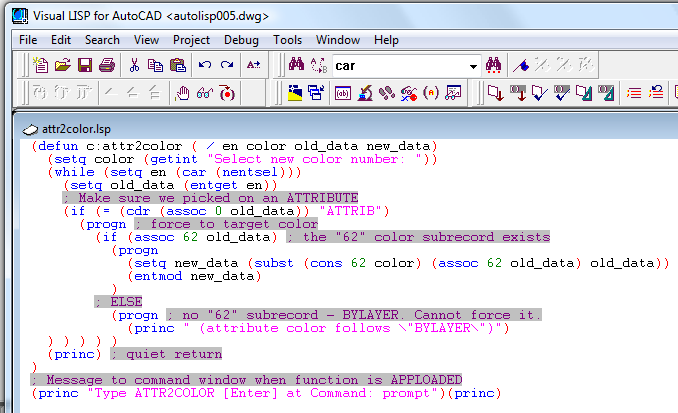

I like to take the opportunity to draw as close to 1-1/2” scale where ever possible. But then the page looked very empty at the scale that I started with. Maybe I started out thinking I would need more space for the dimensions and leaders. I now use this command all of the time, but now it’s mostly for adjusting scales. Often times I think this is created by toggling on the button “Add scales to annotative objects with the annotation scale changes” without realizing what a mess it makes of the drawing. We like our drawings here at Superior Shop Drawings to be clean without excess “junk” or unused scales in them. It was for the purpose of removing excess scales from a drawing that someone else had worked on. When I first went looking to Google to see if a command like this was already out there.

This works for dimensions as well as blocks as I’ll demonstrate in the video below. This LISP file is for removing and or changing the annotative objects. I did rename this one to “ANO”, I don’t like having to type in more than necessary to launch commands. So let’s get to it, here are my top 5 LISP files that I can no longer work without.
#AUTOCAD LISP FILE FREE#
His website has free custom programs and tutorials for the AutoCAD community.
#AUTOCAD LISP FILE MAC#
Lee Mac has one of the largest collections I’ve come across when it comes to LIPS files. If you are not familiar with LISP files, check out Lee Mac’s page for instructions on it. My initial thought was “how many hours have I wasted before using these? I wish someone had shown them to me sooner.”
#AUTOCAD LISP FILE CODE#
It was like someone gave me a cheat code to Autocad. I can remember when I first stumbled on to LISP files. Not having just one of them would greatly impact the speed at which I’m able to produce drawings. You can run the LISP routine by typing the name of the routine or keyword appearing after the C drive designation.įor example, if you loaded a LISP routine named drawbox.lsp and see the designation C:DRAWBOX in the command bar or Prompt History window, you can run the LISP routine by typing drawbox in the command bar.While there are a lot of LISP files for AutoCAD to talk about, there are 5 that I use keeping productivity in mind. You may need to scroll back several lines in the command bar or Prompt History window to find the lines indicating where the LISP routine was loaded. Where D:\path\routine.lsp is the complete drive, path, and file name of the LISP routine. If nothing happens when you attempt to run the LISP routine from within the Load Application Files dialog box, turn on the display of the command bar or Prompt History window by choosing View > Display > Command Bar or View > Display > Prompt History Window, and look for an entry that is similar to the following:

Some LISP routines are created in such a way that you can run them by simply typing the name of the routine, or by typing a keyword, directly in the command bar. In the command bar, type (load “d:/path/routine.lsp”), making sure to include the parentheses and the quotation marks, where d:/path is the drive and path where the LISP routine is located on your computer, and routine.lsp is the LISP routine file name.Ģ In the Load Application Files dialog box, choose the routine you want to run (make sure that it is the only one selected), and then click Load.


 0 kommentar(er)
0 kommentar(er)
